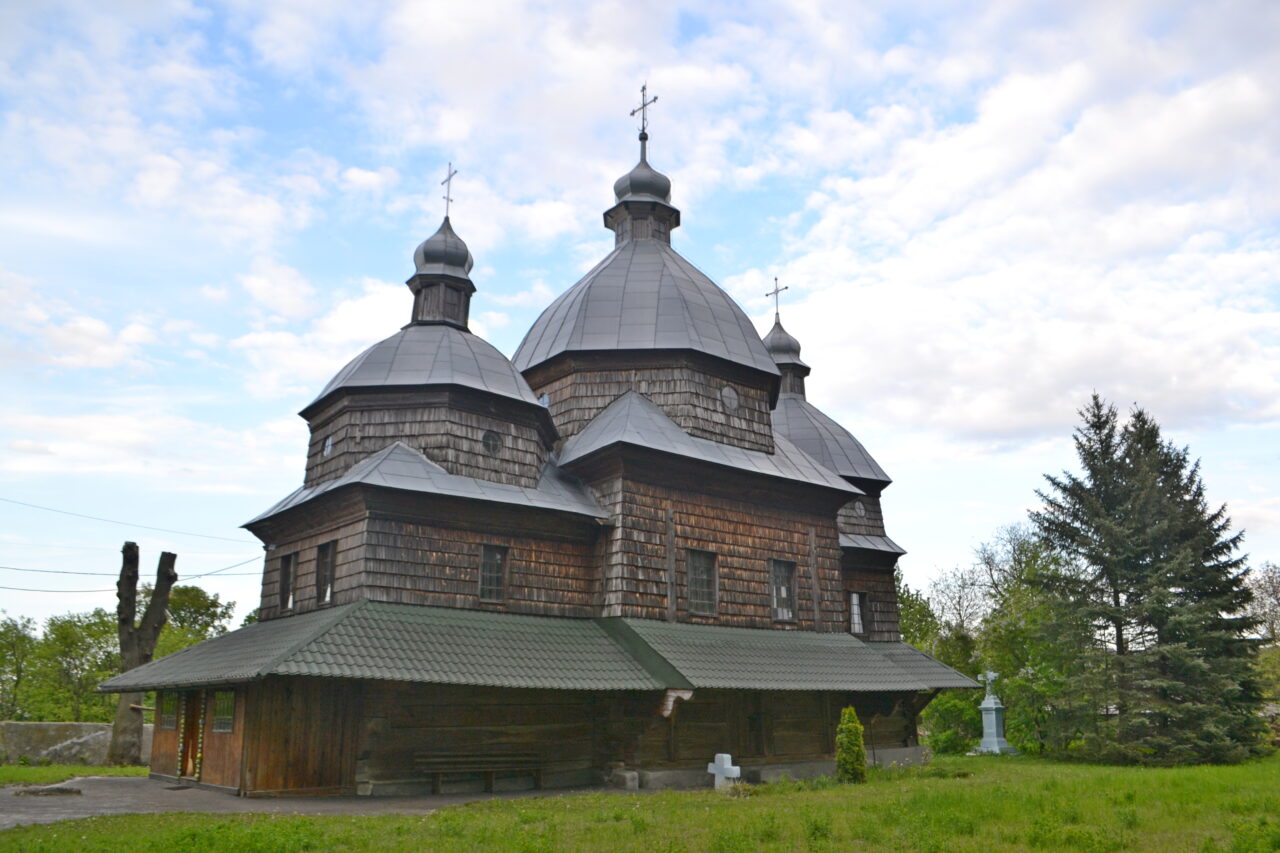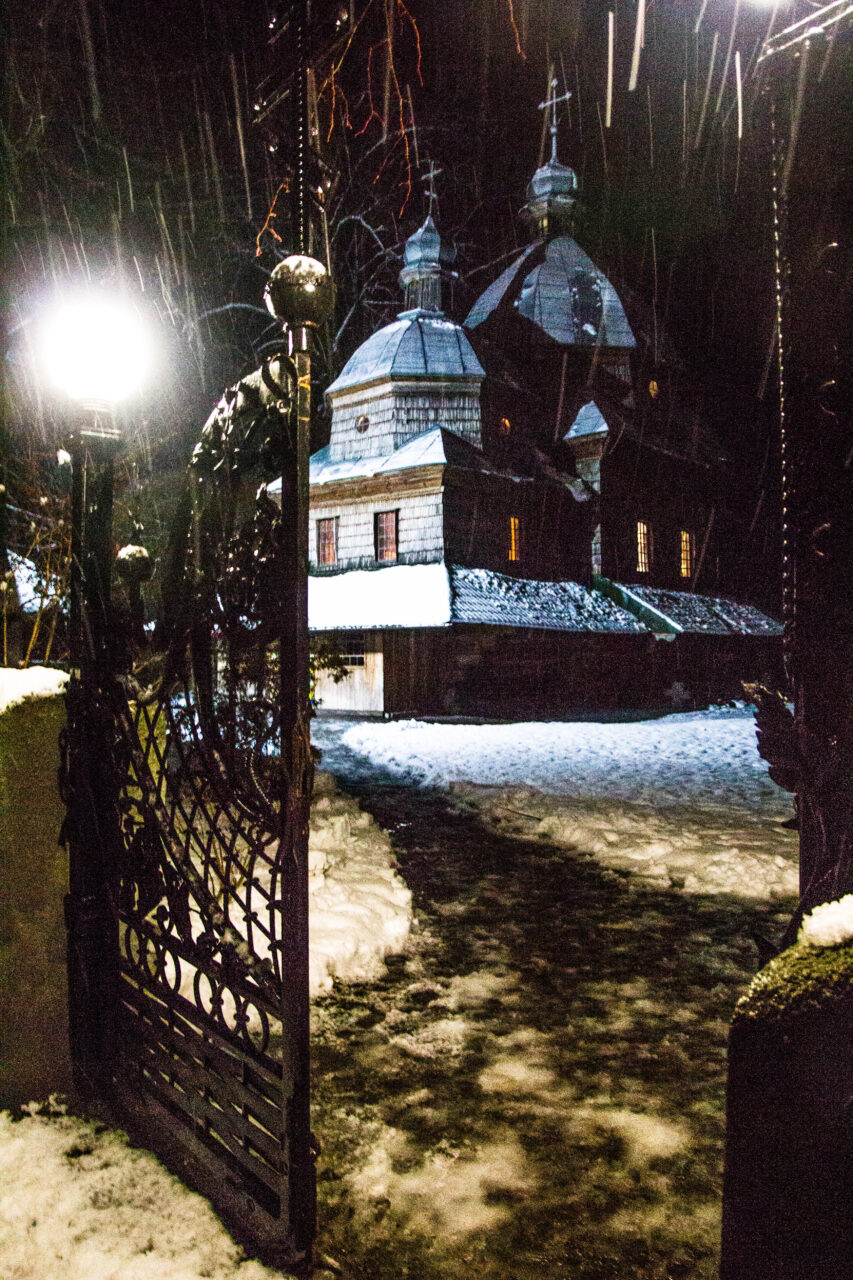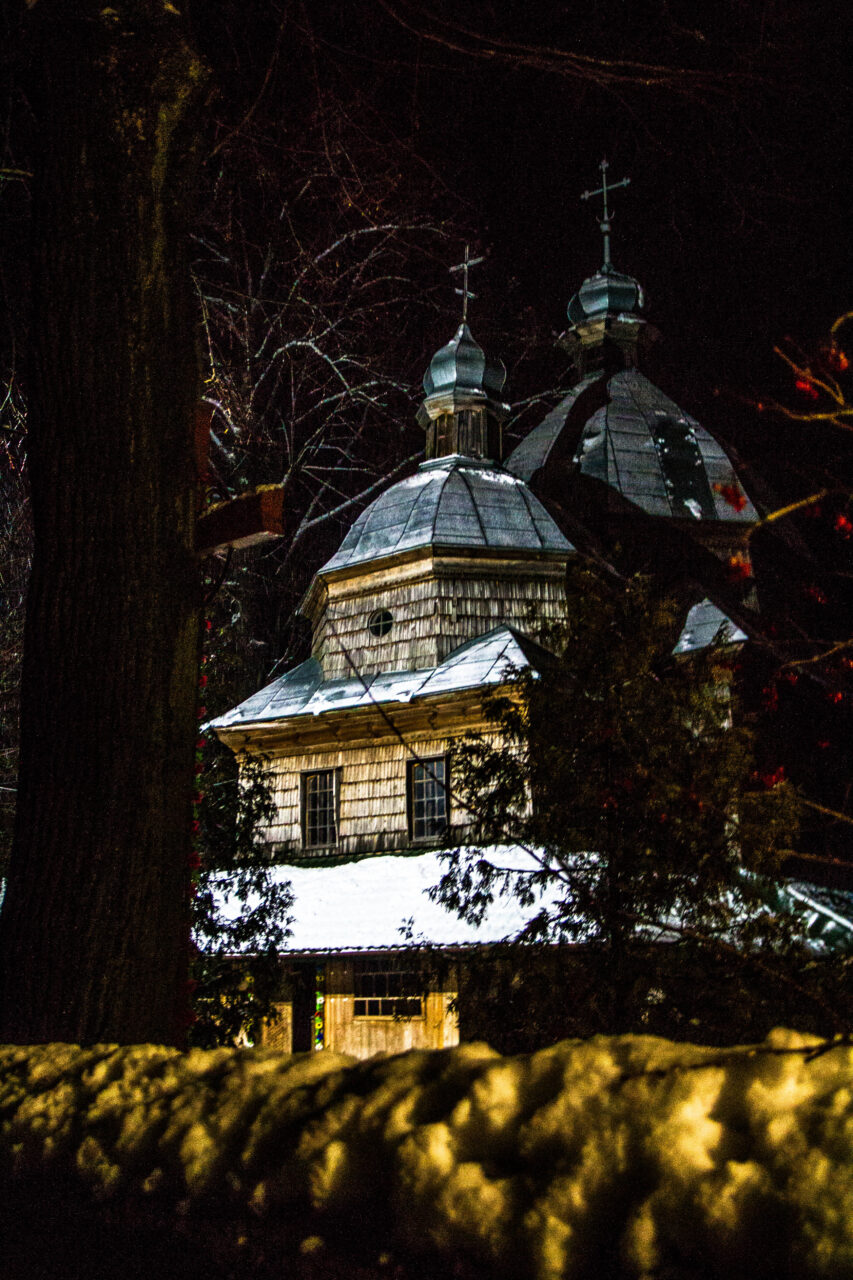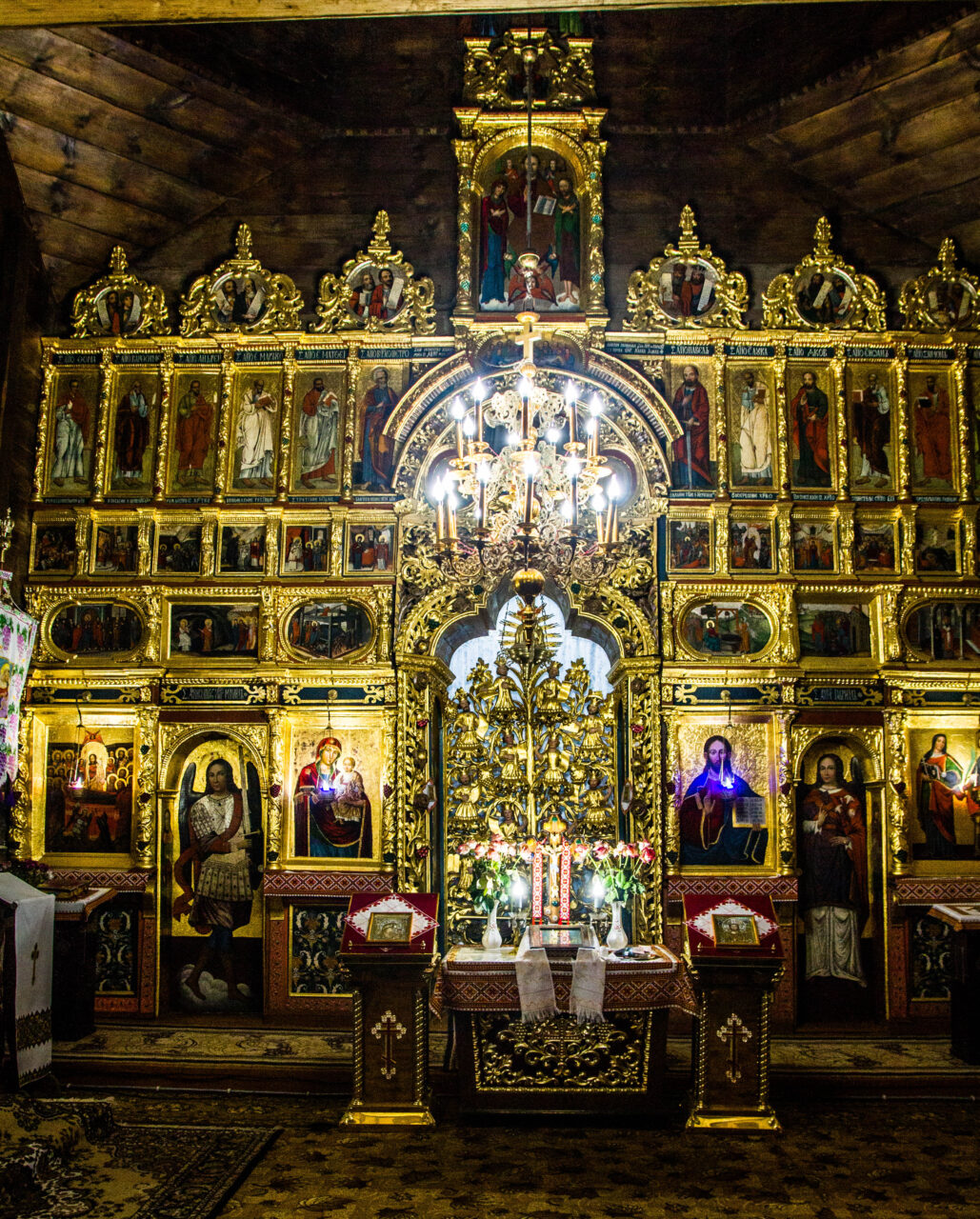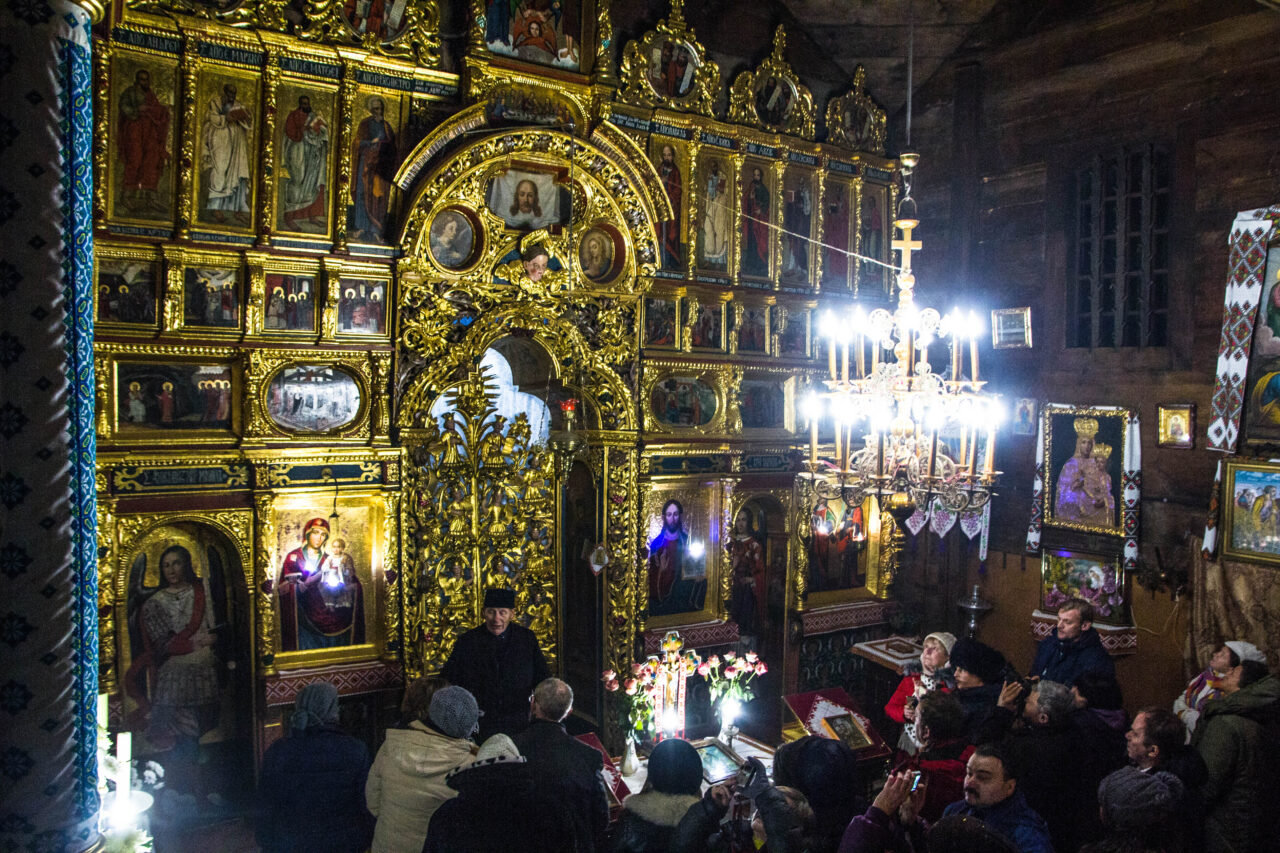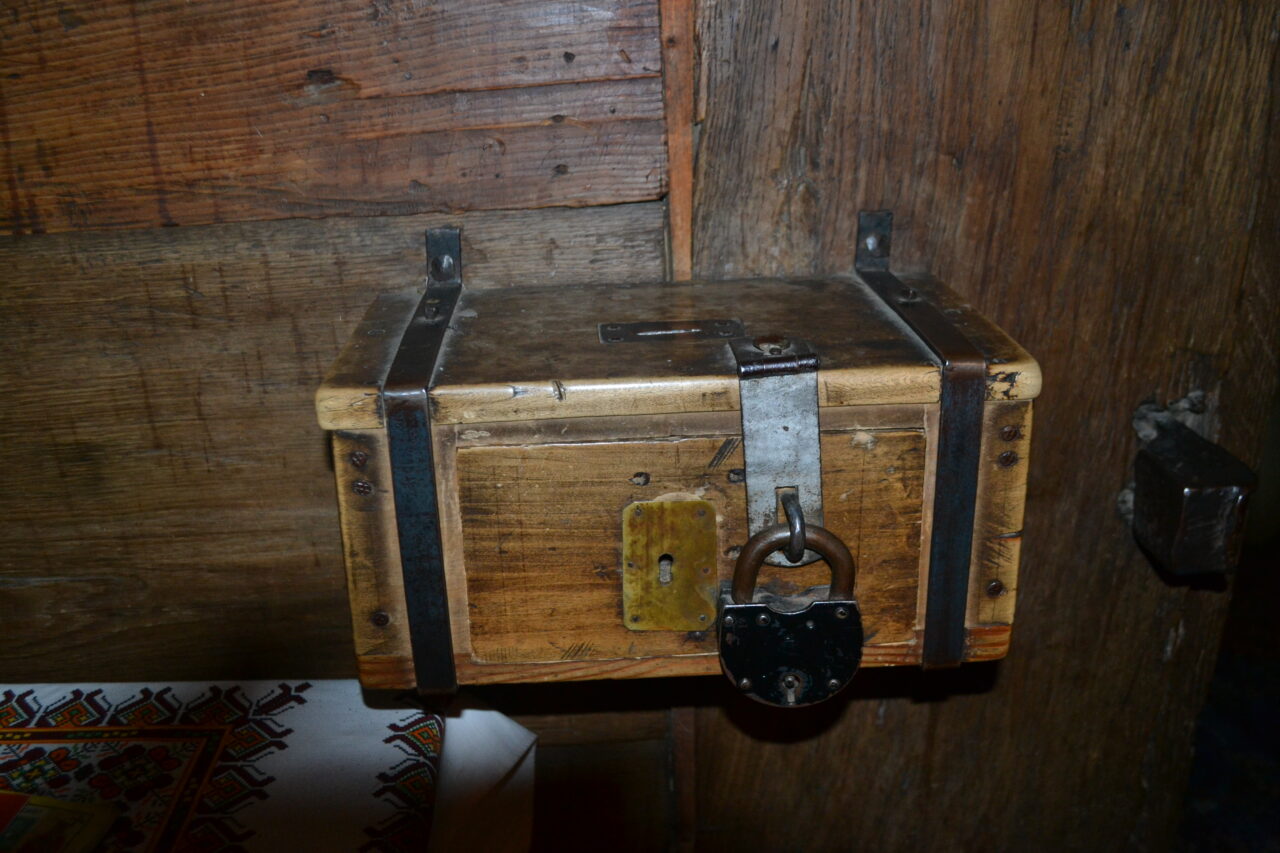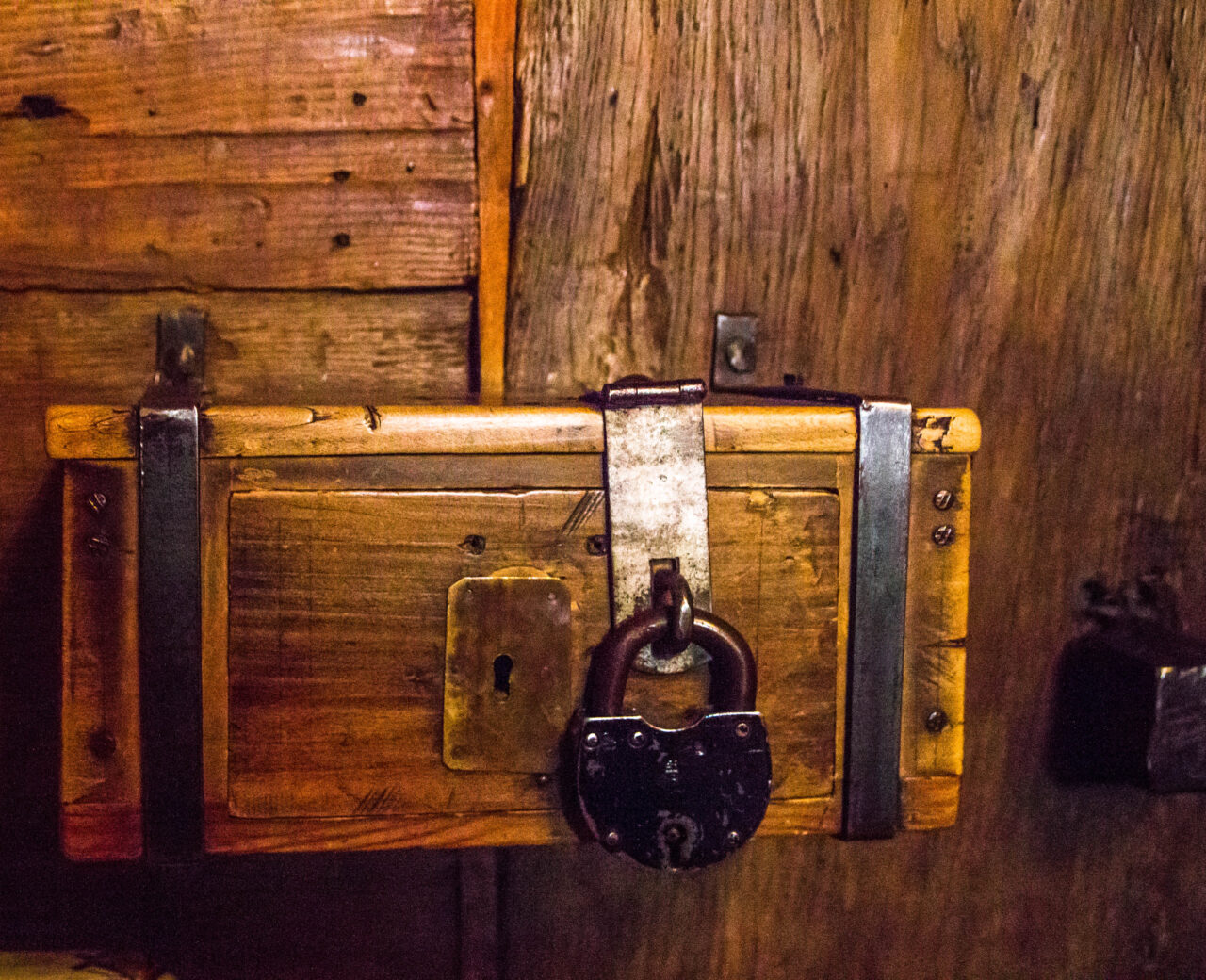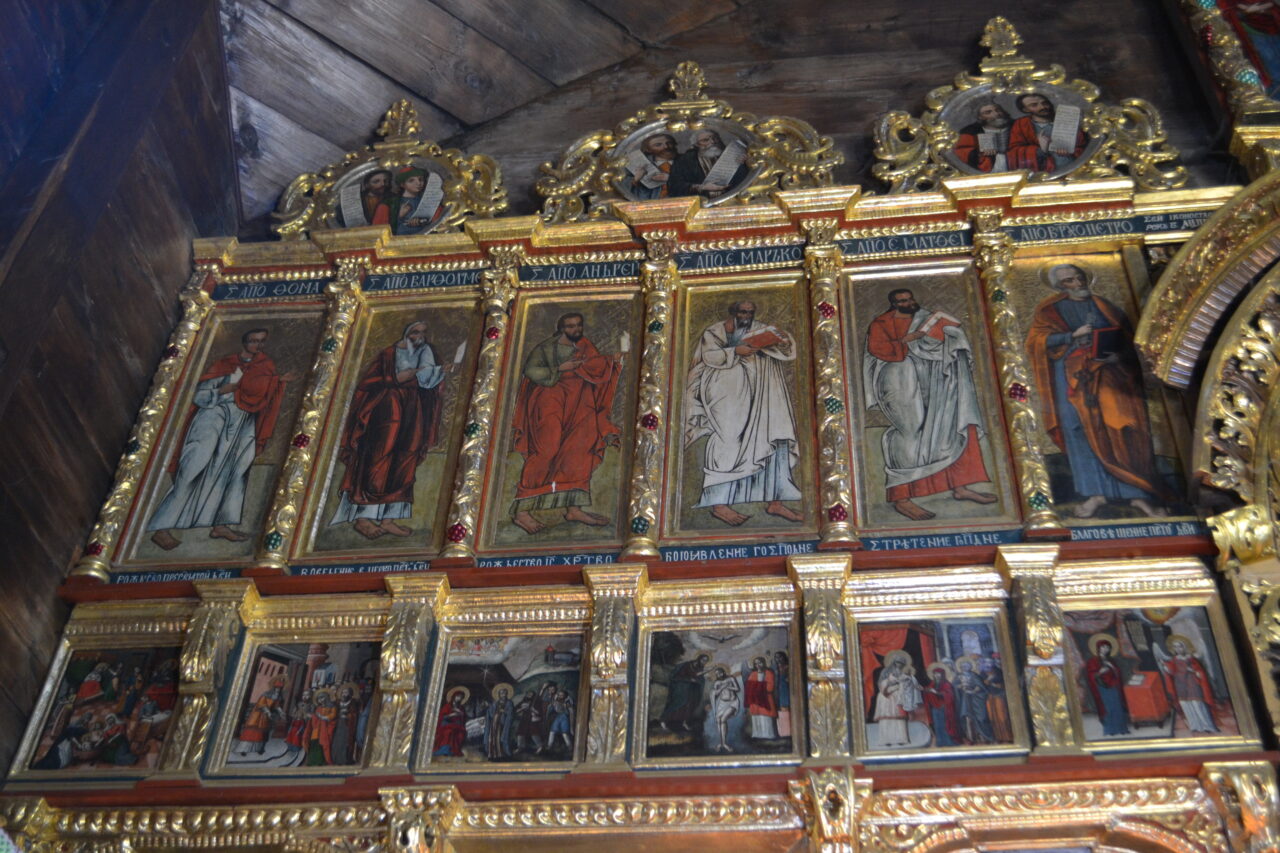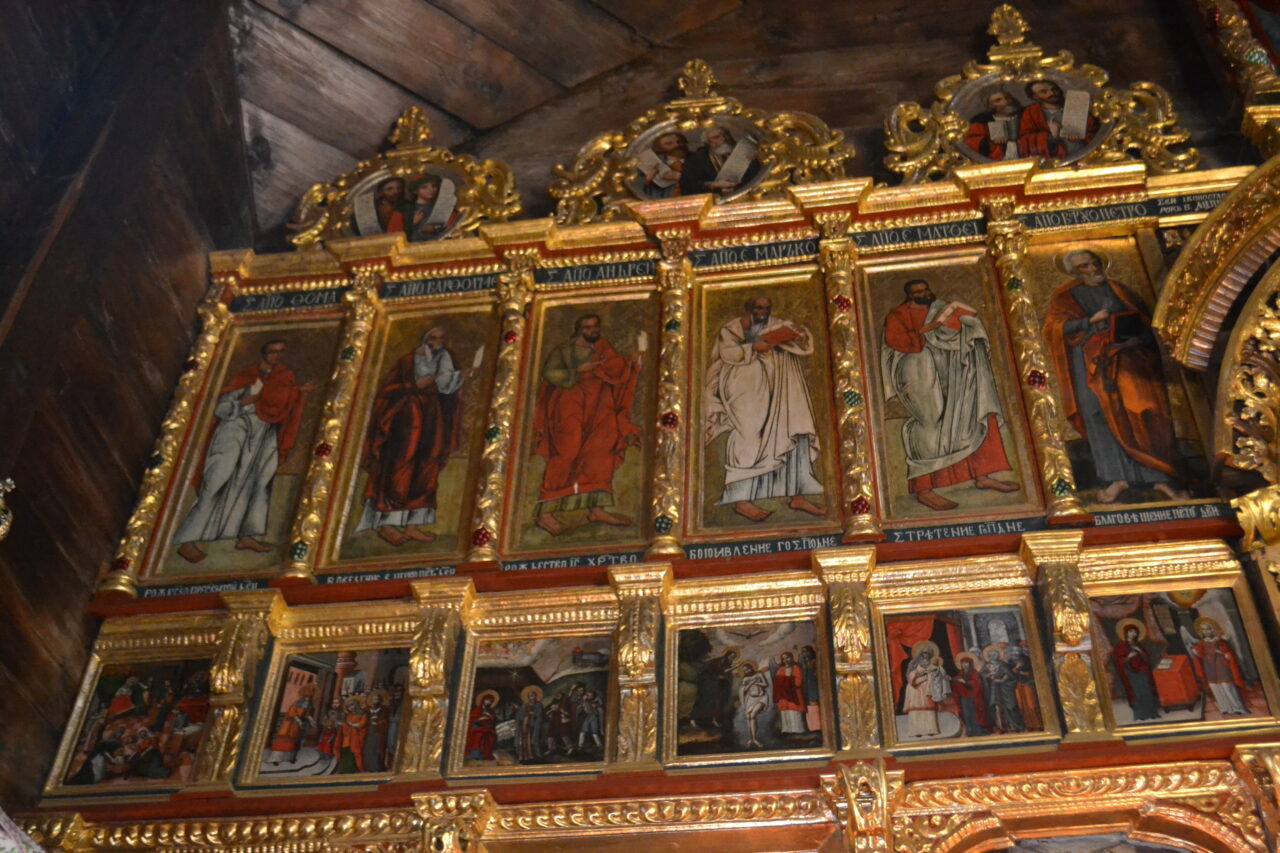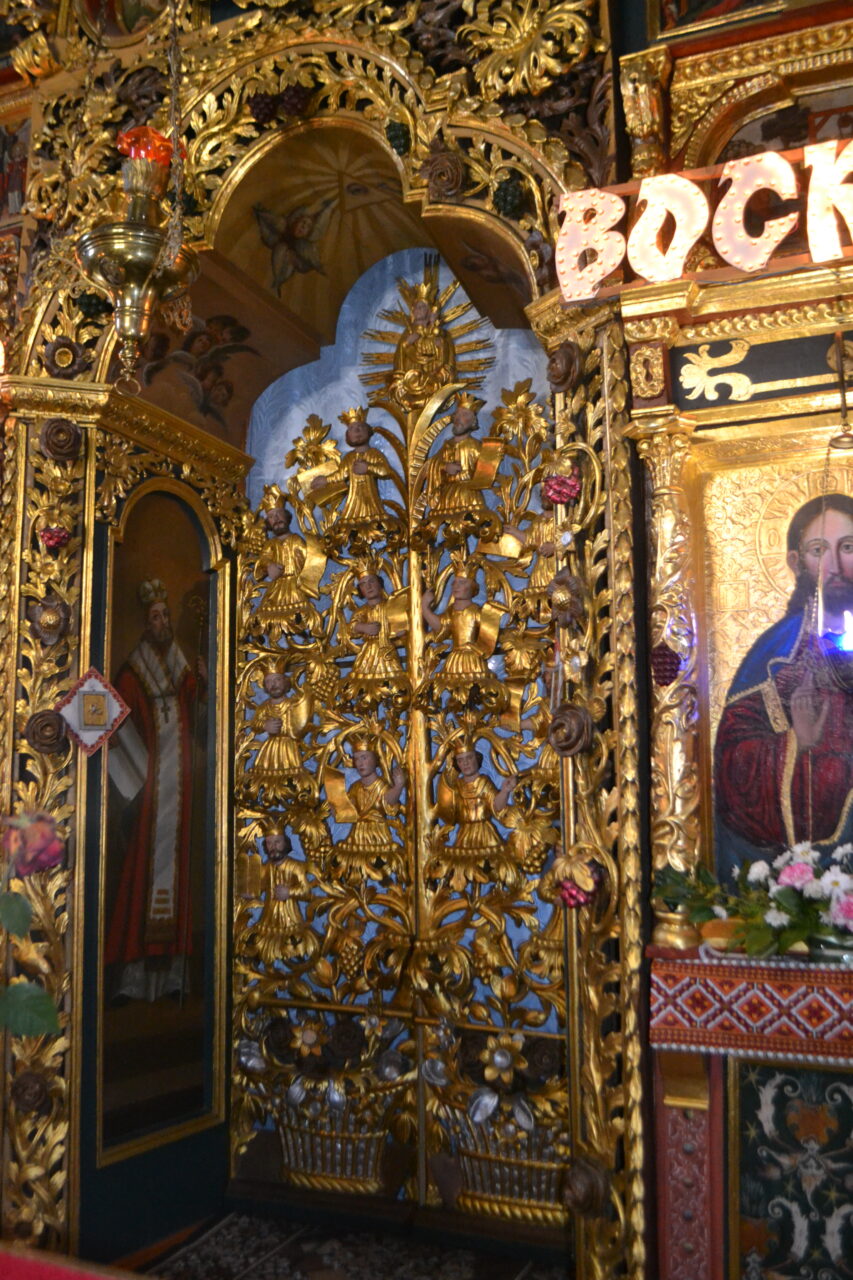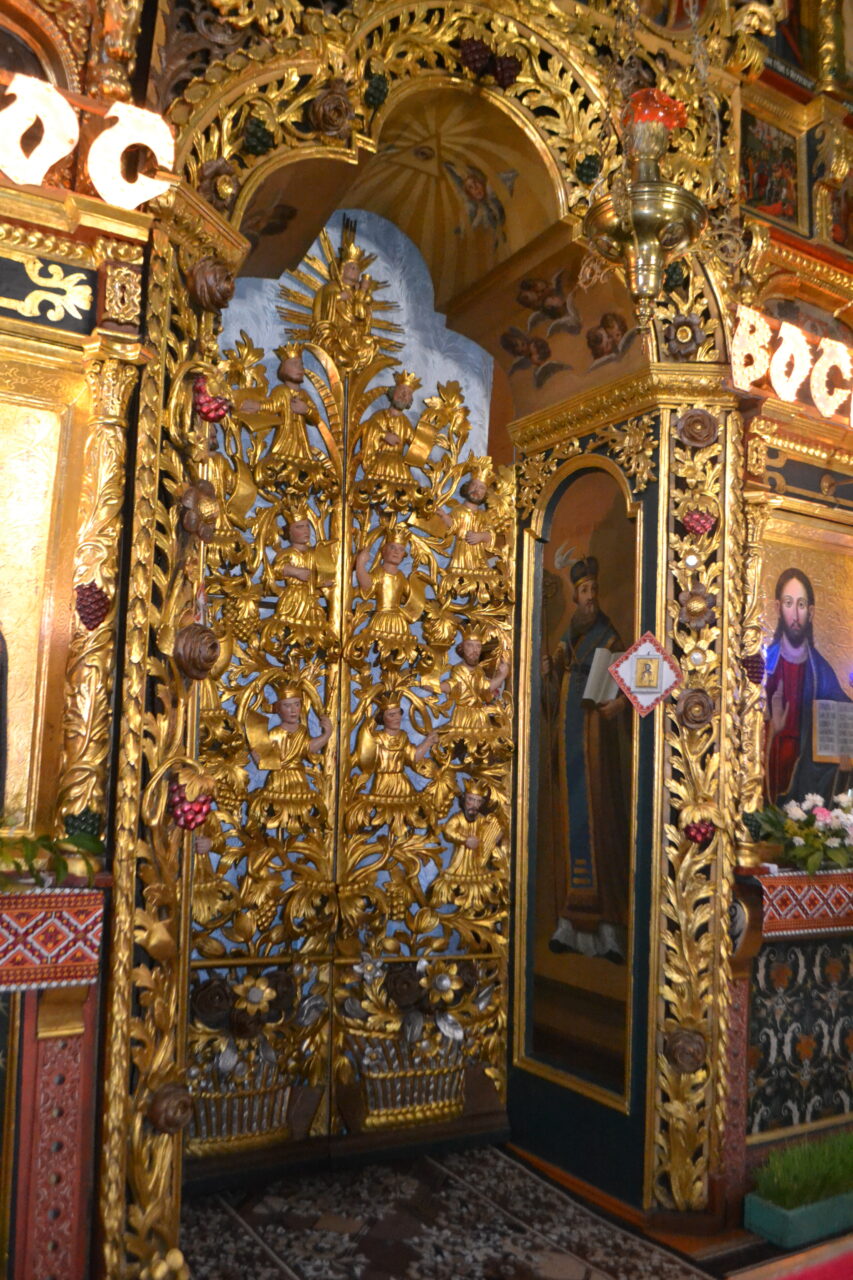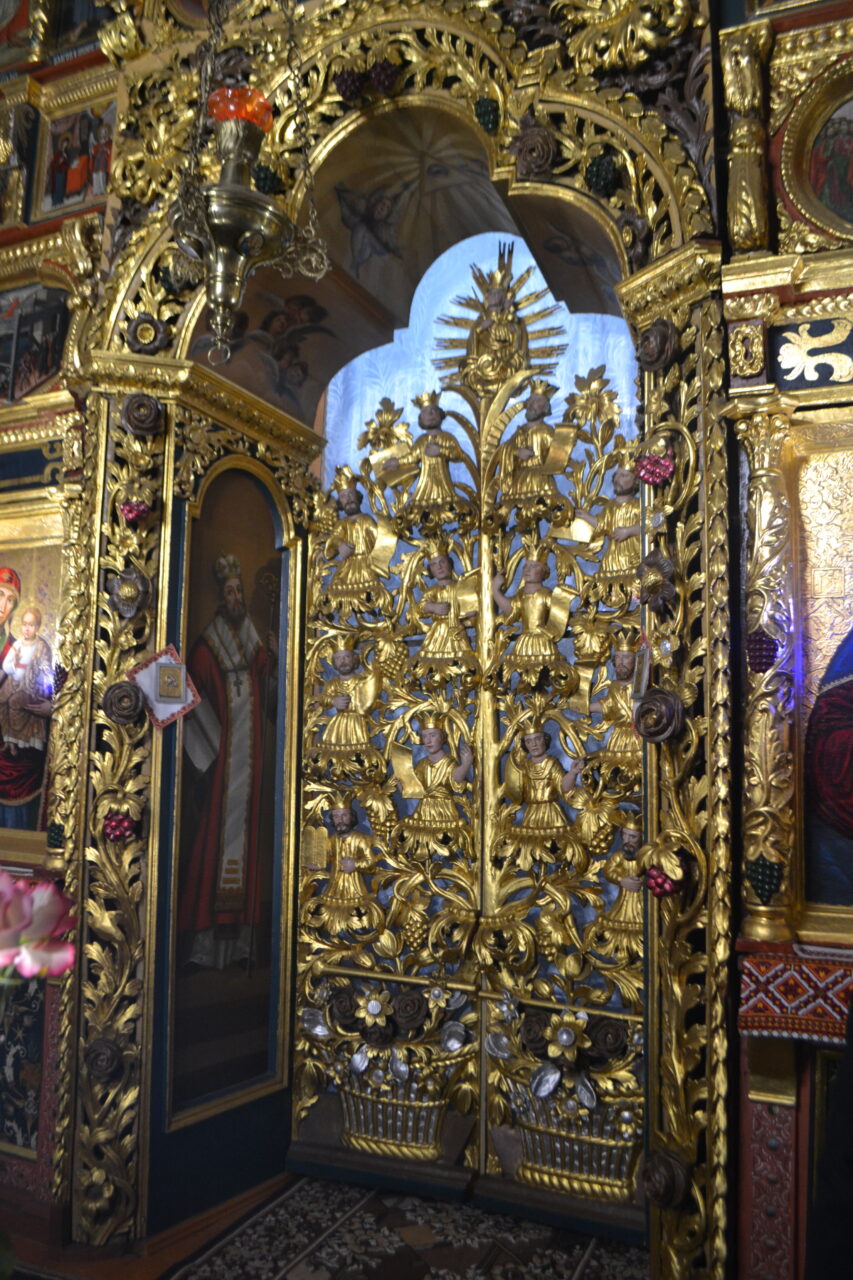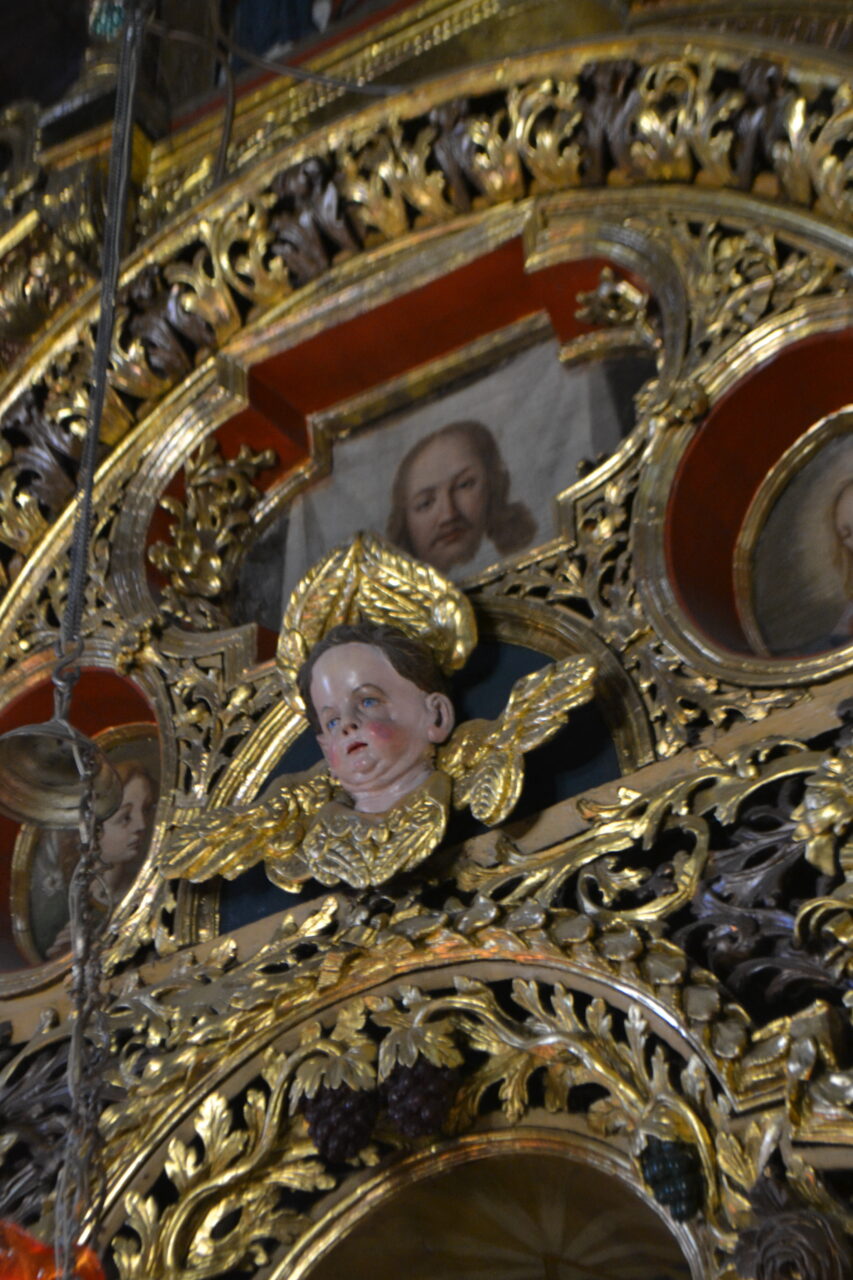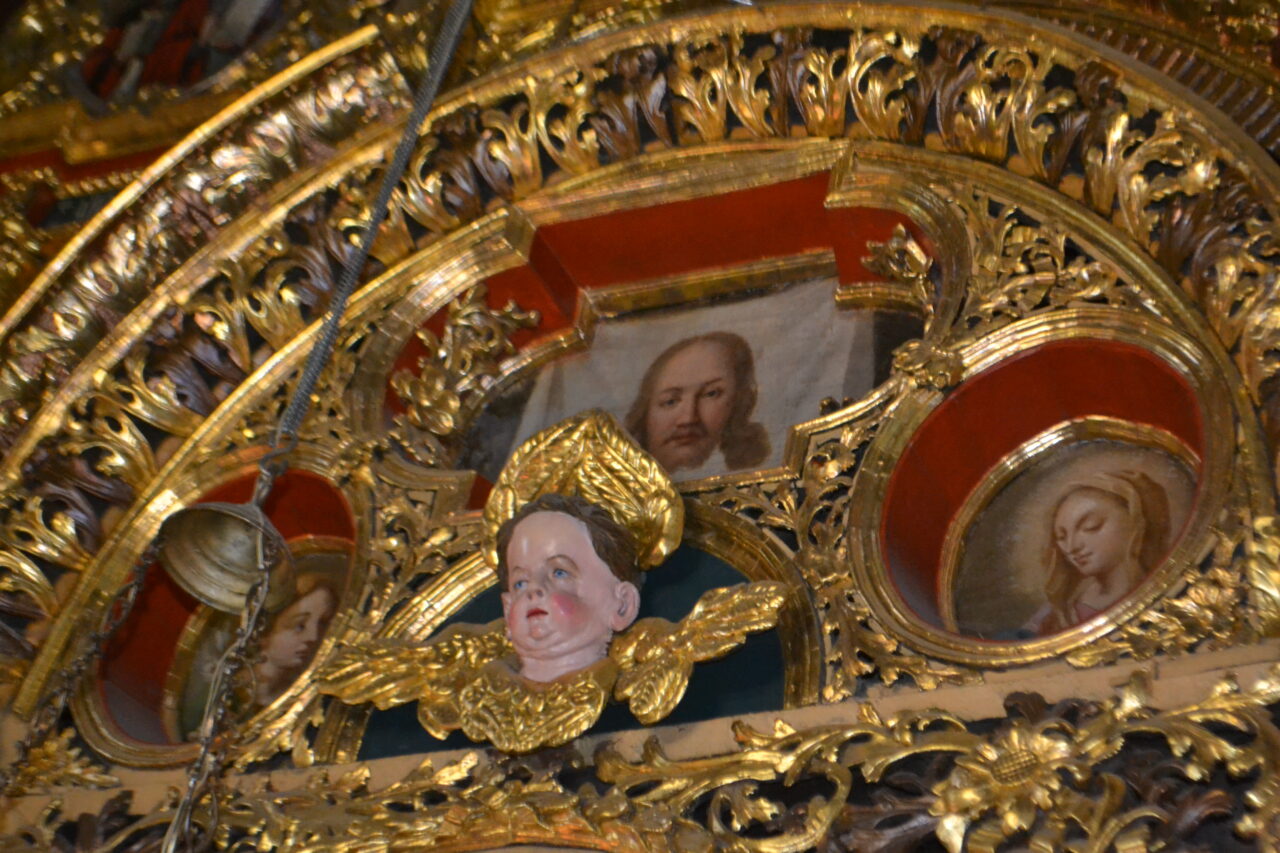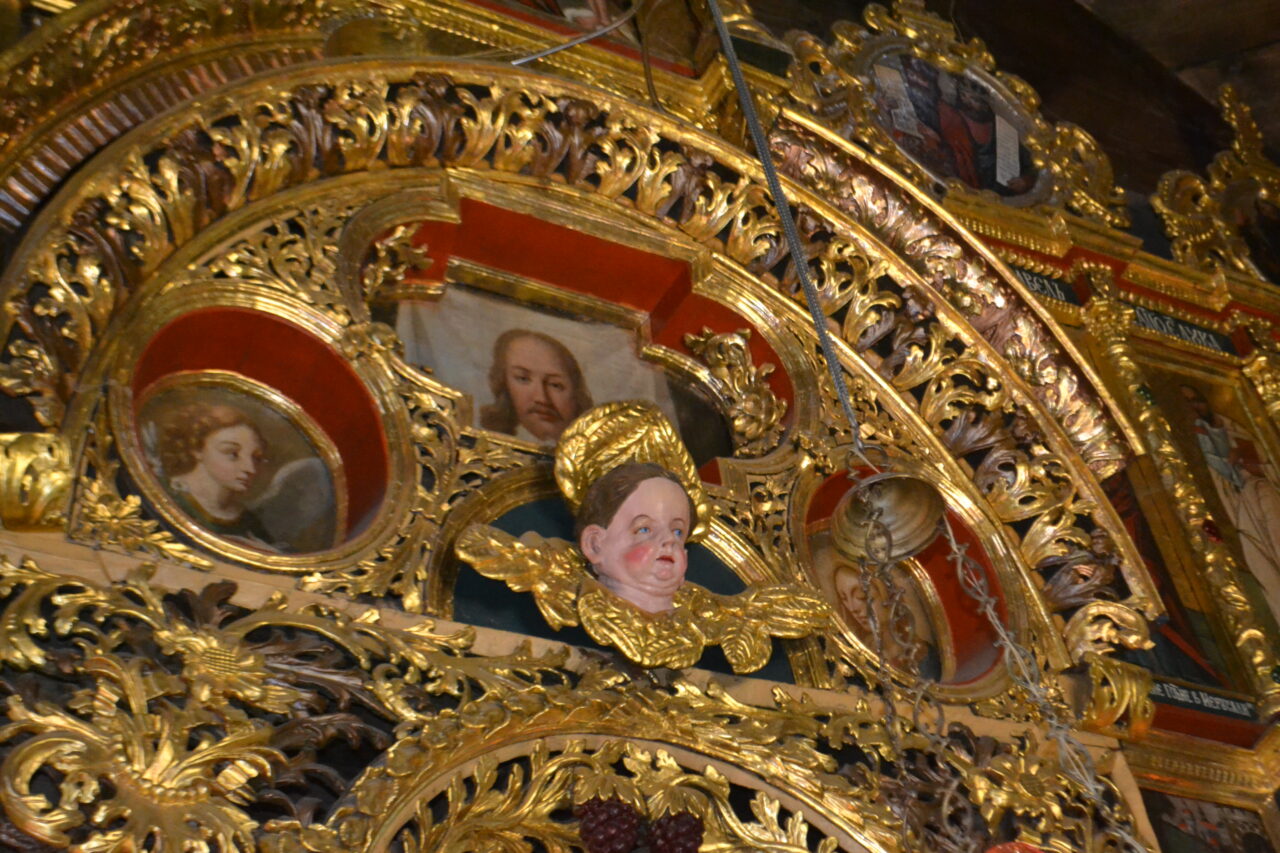Modesty in our time is a very questionable virtue. The humble are not noticed, their existence is not guessed. And it refers not just to people.
Let’s take Krekhiv, in Zhovkva region, widely known for its ancient defensive Basilian monastery. Behind the monastery walls and towers near the ancient brick church there is a stunning wooden church of Transfiguration. However it has been here only for a few decades, the ‘original’ from the 18th century hasn’t been preserved up to now, so the temple has been rebuilt from scratch in the same place with the same shapes.
And how did they know what were the shapes of the temple, which no longer existed? Here it is interesting. Two woodcuts with a detailed view of the monastery, created by Abbot Dionisii Synkevych in 1699 and 1704, had been preserved. Furthermore, in 1724 (the most likely, but not sure☺) local craftsmen built another one in the village, according to the Basilian wooden church, which was dedicated to St. Paraskeva. And so that the church has peacefully been standing up to present.
And there are no crowds of pilgrims with numerous cameras. As the dome is invisible from the buses or cars. The church is modestly hidden behind high old trees and a stone wall that protect it from the glory it really deserves. However the church yard is not more than 400 meters from the road. It is very close.
But there are some doubts about the church age, as well as about the masters. Even not masters, but a master, in the singular: in the interior not only the date is scratched, but also the inscription ‘Ivan Khomiuk was constructing it’. There is one more version (you might get completely confused), that the church in fact was built in 1658 at the Basilian monastery territory, but in 1724 it was relocated together with the bell tower. Then, it turns out, the new monastery church was ALSO built on the model of this beauty?
Maybe yes. But there are other hypotheses. Let’s say the temple arose in the middle of the 17th century, but right here, and didn’t travel anywhere. And the interior date refers only to the redecoration, conducted by Ivan Khomiuk.
Why are there so many versions? Olena Krushynska, the Kyiv researcher of Ukrainian wooden sacred architecture, explains the confusion with an engraving by Dionisii Sinkevych. In 1699 this monk-architect painted the monastery in Krekhiv – at the time of the Holy Transfiguration. And on the engraving behind the almost fortress walls you can clearly see a temple, very similar to the Paraskeva church. And the bell tower nearby is also very similar. Is it a coincidence?
In fact it is. O.Krushynska recalls that recent researches have proved that the temple did not travel anywhere from its glade. But several other churches from the Krekhiv monastery did move around Galicia: to Dobrosyn and Lozyna villages and one of the monastery iconostasis is still preserved in the village Zarudtsi church. The Beautiful Gates of The Paraskeva’s church were also once purchased from the local monastery Basilians.
The three-log and three-domed church is really harmonious, even despite the tin on the tops and the metal tiles on the attic. Its dimensions are considerable: 20.8 by 12.9 meters. A classic Volyn temple that stands statically among the sprawling old trees on the island in the middle of the once swampy plain. Some historians believe the temple performed the defensive function. Hence there is the wall around the yard and the hording on a beautiful but a bit aggressive three-story belfry next to the shrine. Hoarding is a gallery or a balcony, which hang over the lower tiers of the bell towers, in Ukrainian it is derived from ‘hit under yourself’. The archers with weapons used to stand there and shot the approaching enemy. They aimed almost vertically down, trying to strike – they ‘hit under themselves’.
The bell tower is square in plan with 4.5 meters long walls. It used to be possible to enter the churchyard only through it. A simple gate in the fence appeared not so long ago, well, in terms of eternal history, as well as the sacristy, which was completed in 1894.
If the model of the Basilian monastery served as a model for the Paraskeva’s church, the church itself has also become a model for other masters: the Trinity church in neighboring Zhovkva was built almost acoording to the same ‘patterns’. But is it a little younger than the Krekhiv one. A valuable six-tiered iconostasis with Baroque carvings and the icons of the 16th-17th centuries has been preserved in the church interior. There is an assumption that the author of most of the icons was the famous Ivan Rutkovych, but the images of the nine apostles come from an older iconostasis.
The church was thoroughly restored in 1971-1972 according to Ivan Mohytych’s project.

